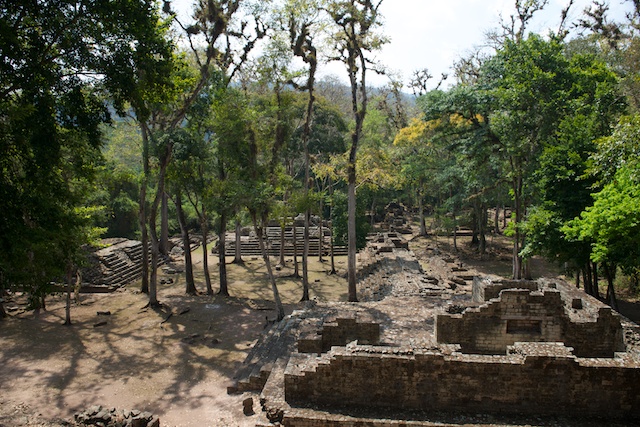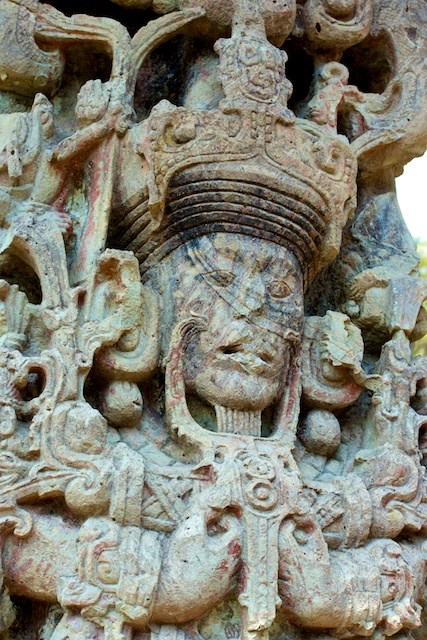Located in the Rio Copan Valley of western Honduras, the ancient city of Copan was the capital of a major Mayan kingdom from the 5th to 9th centuries AD. At the peak of its power the kingdom had a population of at least 20,000. Copan was known for its advancements in arts and astronomy and is famous for its beautiful decorated buildings and sculptures.
Copan Honduras was rediscovered in 1570 by Diego García de Palacio but its existence did not receive worldwide attention until the work of John Lloyd Stephens from 1839 to 1841. Since then, numerous archaeological expeditions have explored and excavated various parts of the Copan ruins.

History of Copan Honduras
In the 5th century Tikal embarked on a campaign of geopolitical domination, involving both military battles and royal marriage alliances. The plan extended to other emerging powers probably including Copan which was not located in an ethnically Maya region. K’inich Yax K’uk’ Mo’ arrived in Copán in December 426 and bone analysis of his remains shows that he passed his childhood and youth at Tikal. He founded a dynasty that ruled Copan until its collapse centuries later.
It was Smoke Jaguar, ruling from 628 to 695, who made Copan into a major military power and constructed the first great buildings in the city. In July 695 Uaxaclajuun Ub’aah K’awiil was crowned as the 13th king in the Copán dynasty. He oversaw both the apogee of Copán’s achievements and also one of the city’s most catastrophic political disasters. During his reign, several incredible detailed stelae were erected representing the highest pinnacle of Maya artistic achievement. The king also carried out major construction works, including new temples.
But in 738 AD disaster struck. In order to dedicate a new ballcourt, Uaxaclajuun Ub’aah K’awiil, also known as 18 Rabbit, went on a military expedition to secure captives for sacrifice. He was ambushed by the king of Quiriguá and captured. How this came about is unclear, but perhaps an aging 18 Rabbit took unnecessary risks in his quest for prisoners. The monument inscriptions at Quiriguá where this event was to be repeatedly and triumphantly recalled simply state, with brutal brevity, that 18 Rabbit was ‘chopped’ 6 days after he was captured. Apparently, the king of Quiriguá, a former vassal of Copan, had allied himself with, Calakmul, the sworn enemy of Tikal. Copán itself was firmly allied with Tikal and Calakmul used its alliance with Quiriguá to undermine Tikal’s key ally in the south. The loss of their mighty ruler had long-lasting consequences for Copán and construction ceased for the next 17 years.

Shortage and disease afflicted the massively overpopulated valley of Copán when its last known king, Ukit Took’, came to the throne on 6 February 822. He commissioned Altar L in the style of Altar Q but the monument was never finished.
Copan Ruins
The Acropolis was the royal complex at the heart of Copán. It consists of two plazas which have been named the West Court and the East Court. It appears today as a large mass of rubble which came about through successive additions of pyramids, terraces and temples.
The Monument Plaza houses the most important structures including nine famous stelae, the Hieroglyphic Stairway and a ball court. The Hieroglyphic Stairway is one of the outstanding structures of Mayan culture and has a total of 62 steps. The stairway takes its name from the 2200 glyphs that together form the longest known Maya hieroglyphic text.